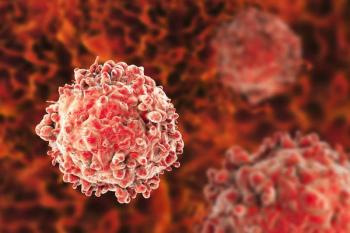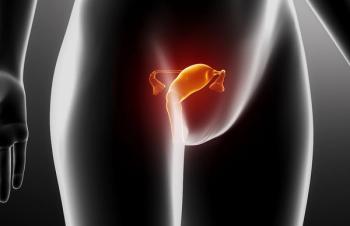
Oncology NEWS International
- Oncology NEWS International Vol 10 No 3
- Volume 10
- Issue 3
CNS Most Common Site of Testicular Lymphoma Relapse
BOSTON-A Rare Cancer Network study of testicular lymphoma found that relapses are most likely to occur in the central nervous system (CNS), Mahmut Ozsahin, MD, PhD, said at the 42nd Annual Meeting of the American Society for Therapeutic Radiology and Oncology.
BOSTONA Rare Cancer Network study of testicular lymphoma found that relapses are most likely to occur in the central nervous system (CNS), Mahmut Ozsahin, MD, PhD, said at the 42nd Annual Meeting of the American Society for Therapeutic Radiology and Oncology.
Dr. Ozsahin, of Centre Hospitalier Universitaire Vaudois, Lausanne, Switzerland, said that seven European cancer centers provided records of 36 adult patients treated between 1980 and 1999 for the retrospective study of this rare but aggressive form of extranodal lymphoma. Median follow-up was 42 months. Most patients had stage I or II disease; all had high-grade lymphoma.
Half the patients had a complete work-up, Dr. Ozsahin said. The others had partial staging only. All but one had the testicle removed, but otherwise treatments varied substantially. Half the patients had radiotherapy plus chemotherapy, and 31% had chemotherapy alone. Radiotherapy was used alone for four patients, and one patient only had surgery.
"The combined treatment modality was superior to radiation therapy or chemotherapy alone," Dr. Ozsahin said, noting that most patients benefited from chemotherapy, usually the CHOP regimen (cyclophosphamide, doxorubicin, vincristine, prednisone).
In patients receiving radiotherapy, no relapses occurred in the irradiated volumes. Neither radiotherapy technique nor dose affected outcomes.
After a mean follow-up of 11 months, 14 patients had relapsed. The sites of progression were the CNS (8 patients), para-aortic nodes (4 patients), and contralateral testis (2 patients). Delivering chemotherapy as intrathecal prophylaxis to the cerebrospinal fluid did not prevent CNS relapse, Dr. Ozsahin said.
At 5 years, the overall survival rate was 47%, the lymphoma-specific survival rate was 66%, and the disease-free survival rate was 43%.
"We should find more effective CNS prophylaxis modalities, maybe whole brain radiotherapy," Dr. Ozsahin concluded.
Articles in this issue
almost 25 years ago
First Racial-Ethnic Breast and Cervical Cancer Screening Dataalmost 25 years ago
Mitotic Activity Index IDs High-Risk Node-Negative Breast Canceralmost 25 years ago
Programs Help Women/Physicians Decide on Adjuvant Therapy for Breast Canceralmost 25 years ago
Disclosure Issues in Cancer Gene Testing Worry Doctorsalmost 25 years ago
Functional Assessment of Geriatric Cancer Patients Neededalmost 25 years ago
Mobile Mammography Programs Are Struggling to Survivealmost 25 years ago
Ellence Research Fund Names 11 Grant Recipientsalmost 25 years ago
Hyperfractionated RT Ups Pharynx Cancer Survivalalmost 25 years ago
Internet Creates Virtual Radiology DepartmentNewsletter
Stay up to date on recent advances in the multidisciplinary approach to cancer.
































































































